“Unicorn” Scotch whisky is in another dimension compared to unicorn bourbon bottles. Scotch has almost always had a patina of collectability well beyond the latest whisk(e)y boom. Where bourbon tends to tap out around $20,000 (very generally) on the high end, collectible scotch is only getting started at that price point. Spending $200,000 on a bottle of the ultra-rare stuff isn’t that out of the question. Hell, spending $1,000,000 on a bottle isn’t unheard of either. There’s a lot of space in the Scotch whisky market for insanely priced bottles of booze is what I’m getting at.
For this list, I’m diving into 10 bottles of unicorn Scotch whisky that have been released in the last year or so. I tried to keep it focused on the now, so things like the 2018 Oban 21, The Dalmore Constellations, or The Bowmore 1957 are not listed below, as they all came out years ago. This list consists of the new bottles that, depending on your checking account, you might even be able to score right now.
Lastly, I’m ranking these by how unique they are. I’m not ranking them by investability and in no way am I projecting any future value. I’m also providing tasting notes on the ones that I’ve been lucky enough to try so far this year (and last).
As for the actual ranking, the top half is not only pretty findable but you might actually be able to buy a taster here and there. Look at it this way, if you come across any of the bottom six bottles at a high-end whisk(e)y bar, give it a shot and then decided whether to commit to a whole bottle for the vault. As for the top four bottles, well, if you do run into them, then you’re already running in the top whisky circles anyway because they’re seriously ultra-rare.
Also Read: The Top 5 UPROXX Scotch Whisky Posts of The Last Six Months
10. The Balvenie 40 (February 2022)
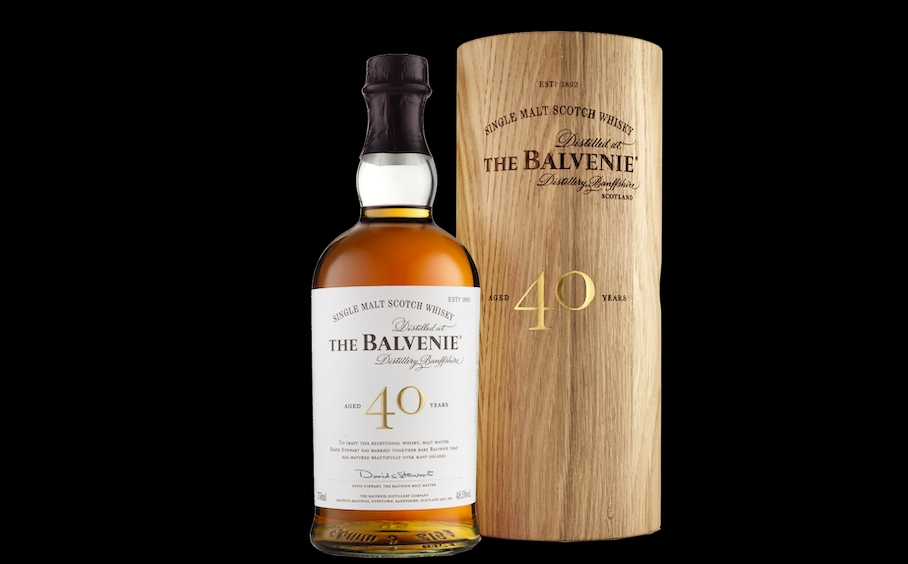
ABV: 48.5%
Average Price: $6,250
The Whiskies:
This whisky is all about Malt Master David Stewart MBE — who basically invented special barrel finishes — finding the best 40-plus-year-old barrels and blending them into this miracle of an expression. The seven barrels are a mix of traditional ex-bourbon casks and sherry butts that somehow survived the four decades in the warehouse with something not only drinkable but delicious still in those casks. Those barrels ended up providing only 150 bottles.
Tasting Notes:
There’s a leathery dark fruit vibe on the nose with a clear sense of old honey barrels and maybe even dead honey bees [Editor’s note: !!!] next to fresh cream and raspberries, orange marmalade with plenty of burnt zest, and a soft vanilla cream sauce. The palate leans into that orange with candied edges, kind of like a holiday fruit cake, with candied ginger, candied almonds, tea-soaked dates, and super mellow winter spices that lead back to that creamy vanilla with a hint of black licorice and a small whisper or soft cedar. The finish marries the burnt orange with the old and woody honey with a whiff of the moldy cellar, cobwebs, and a final brush of an old straw broom.
Bottom Line:
This is a wonderful pour that’ll open the Matrix on unpeated Scotch whisky. It’s revelatory yet understandable as a sip of sweet whisky. It feels old, sure, but it’s also so vibrant and bold. A few drops of water really helps this one bloom, but it’s pretty complex without it.
9. The Singleton of Glen Ord 39 (November 2021)
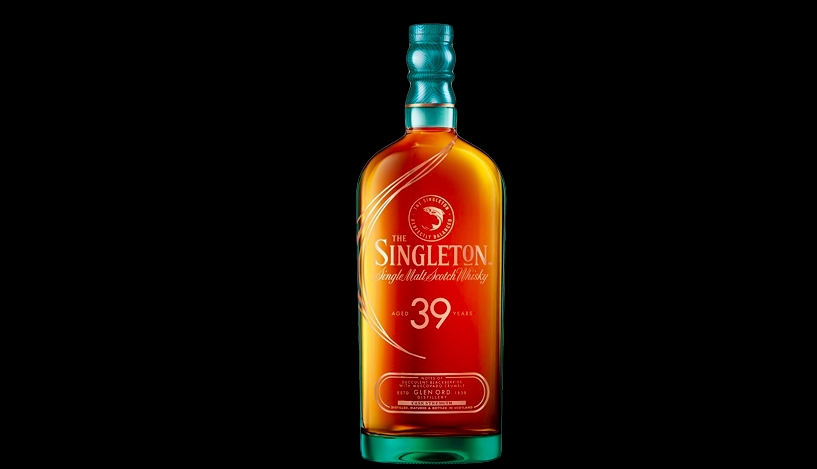
ABV: 45.9%
Average Price: $3,150
The Whiskies:
This whisky was drawn from three 39-year-old casks. The first was an ex-red wine cask, the second was an ex-port cask, and the third was a re-seasoned European oak cask that held Pedro Ximinez and Oloroso sherry. The marriage of those three casks gave us only 1,695 bottles of this cask-strength expression.
Tasting Notes:
The nose on this reminds you of a hot day in wine country with rum-macerated blackberries that are countered by a decadent Christmas cake brimming with fatty nuts, dried figs, candied orange, brandy-soaked cherries, raisins, sultanas, prunes, and plenty of cinnamon-heavy spices with a hint of toffee and vanilla smoothing everything out. Moving onto the palate, the silkiness of the mouthfeel is off the charts. That creaminess leads to cloves, anise, and sassafras with hints of red peppercorns, bay leaf, and dark berry tobacco with a distant hint of sea salt. The finish circles back to the spicier edge of the Christmas cake that’s been soaked in cherry liquor (nearly cough syrup) next to that blackberry tobacco leaf with a whisper of mint to it.
Bottom Line:
The first time I tasted this I thought, “Well, I could just drink this for the rest of my life and be happy.” And that’s the only reason this is lower on this list. I want to drink this stuff, not save it in a vault. Overall, this might not be the rarest whisky on the list (1,695 bottles is a fair few) but it might be one of the tastiest.
8. Ardbeg 25 (January 2021)
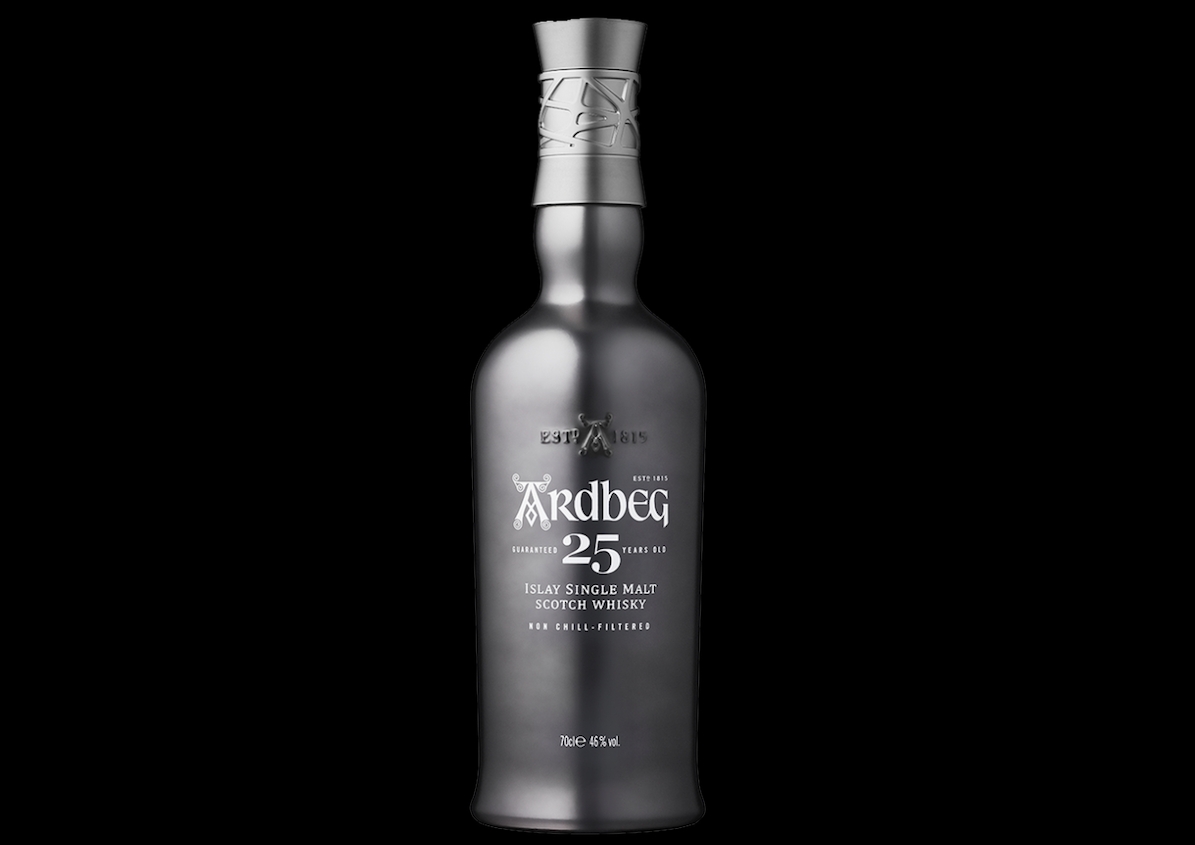
ABV: 46%
Average Price: $1,190
The Whisky:
This expression from Ardbeg also happens to be their oldest expression (as of their current lineup). The whisky is the epitome of peat on Islay. What makes this expression so special and extremely rare is that it was distilled and casked when Ardbeg was on its knees as a company, in the early 1990s. They simply weren’t making that much whisky back then and there’s hardly any of it left. That makes this a one-and-gone whisky with only 278 bottles, 90 of which were sent to the U.S.
Tasting Notes:
Heavy cream, smoked toffee, lemon pith, and ashes from last night’s campfire open this one up on the nose before veering toward soft sea-filled air, a touch of muddy bog, and old shovel handles from a well-worked farm. On the palate, there’s this deep sense of potting soil that’s still in the plastic from the garden shop next to uncooked smoked bacon rashers with plenty of black pepper and a slightly sour edge leading back to that heavy cream and smoked toffee by the mid-palate. Finally, hefty/spicy packed tobacco chewiness brings about a full-on head buzz — it’s a wild sensation.
Bottom Line:
Like most Ardbeg limited editions, this is a wild ride. It also sticks with you. I always feel bad pouring from my bottle of this because there are so few, but it’s just so damn good, interesting, and rewarding to sip it slowly, one dram at a time. This means that if you do come across one of the 90 bottles that made it to the U.S., you’ll at least know someone out there has already opened theirs.
7. Talisker 30 (October 2021)
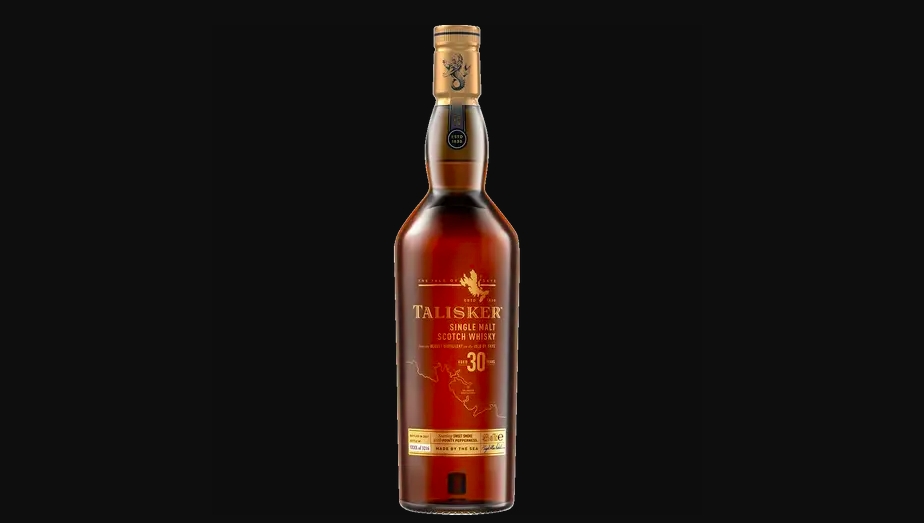
ABV: 45.8%
Average Price: $1,000
The Whisky:
Talisker’s seaside vibes are on full display in this beautiful bottle. The 2021 limited release was around 3,000 bottles, making this a very rare expression from the Isle of Skye distillery. Those bottles were pulled from both ex-bourbon and ex-sherry casks and masterfully blended right next to the sea at cask strength.
Tasting Notes:
The nose is shockingly subtle and soft with velvety notes of smoldering dried nori next to matchsticks that have been dipped in a buttery and rich dark chocolate with sea salt gently sprinkled all over. The palate leans into the dialed-back peat by bringing about a smoked cream with fire-seared peaches next to a hint of wet cedar, very old tobacco leaves, and a touch of almond or oat milk flecked with salt. That salt drives the mid-palate towards a finish that’s like getting kissed by merfolk on a beach next to a campfire that’s heating a cauldron full of spicy stewed peaches in more of that cream.
Bottom Line:
This isn’t my favorite Talisker — that’d be the 25 — but this is alluring. It’s also pretty rare as these aren’t released every year. Instead, these pop up sporadically once or twice a decade. All of that aside, this is a subtle and beautiful whisky that you might not even notice is peated since it’s so meticulously made.
6. Lagavulin 26 The Lion’s Jewel (September 2021)
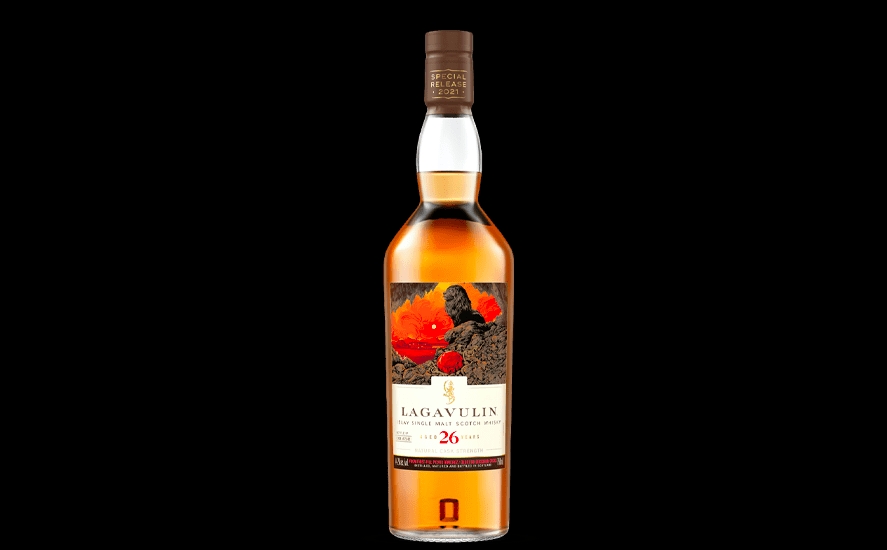
ABV: 44.2%
Average Price: $2,450
The Whisky:
This is a very rare and unique whisky. First, it’s the first 26-year-old Lagavulin ever released. Next, there were only 7,500 of these bottles released. Lastly, the whisky was built from a combination of first-fill Pedro Ximenez and Oloroso sherry casks. Those barrels were married after over two decades of mellowing and bottled at a very accessible cask strength of 44.2 percent.
Tasting Notes:
The nose opens with red wine barrel staves and old boat ropes thrown into a campfire next to figs wrapped in nori and drizzled with rich butterscotch while hints of outboard motor smoke on the dock just a few feet away. From there, the taste mellows towards smoked dates flaked, a sense of sardine oil, and plenty of salt and black pepper. The finish mellows as this wet and earthy note arrives that’s one part forest mushroom, one part wet green moss, and one part smoldering wet cedar branches with a slight peppery tobacco dryness and warmth on the very end.
Bottom Line:
This was one of the most interesting releases from Diageo in recent years just in general. It’s just a wild ride on the palate with a truly unique vibe, even for a Lagavulin. This is a big and bold Islay peated malt that has true nuance if you give it a chance.
5. Bowmore 30 (October 2021)
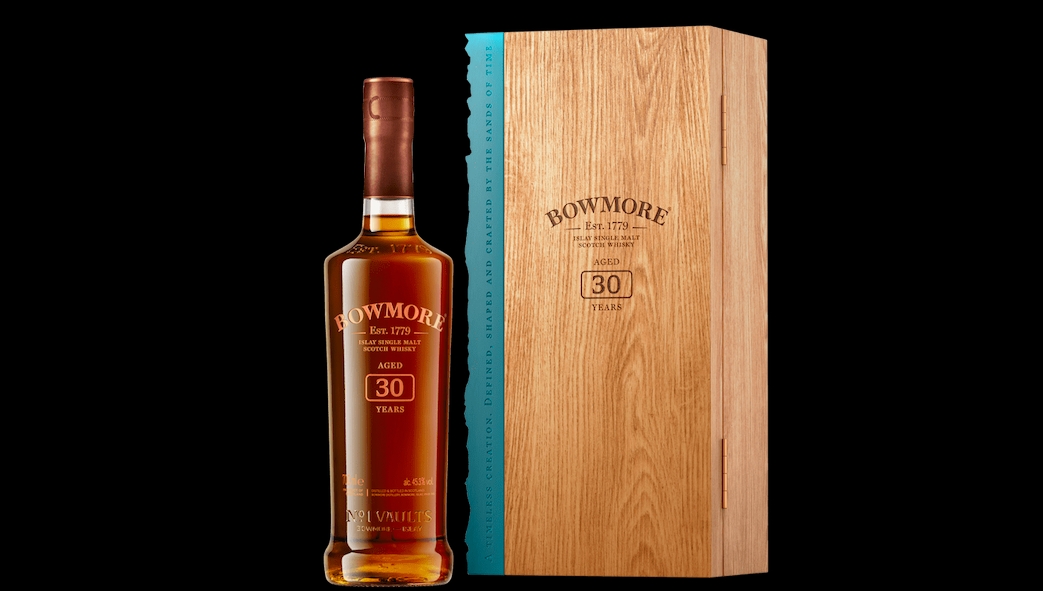
ABV: 45.3%
Average Price: $6,409
The Whisky:
This whisky from 1989 spent 30 years mellowing in sherry hogsheads (a slightly larger than average barrel) and ex-bourbon barrels. Those barrels were masterfully blended and created only 2,580 bottles at cask strength.
Tasting Notes:
The nose opens with a clear sense of summery floral honey next to tons of vanilla and butterscotch that leads to grilled tropical fruits (think pineapple on a grill) and stewed stone fruit (think peaches in a pie). The honey and grilled pineapple come together on the palate as singed cinnamon sticks, allspice berries, and dry basil mingle on the taste. The mid-palate picks up on the vanilla sweetness with more orange, peach, and maybe some gooseberry with a tart/savory vibe as a dried eucalyptus incense stick puffs a small line of smoke deep in the background of the finish.
Bottom Line:
I’ve really taken to Bowmore lately. Their very low-peated malts really shine in sherry casks. This is a great overall expression of the distillery that just so happens to be really delicious and interesting.
4. Johnnie Walker Masters of Flavour Aged 48 Years (December 2021)
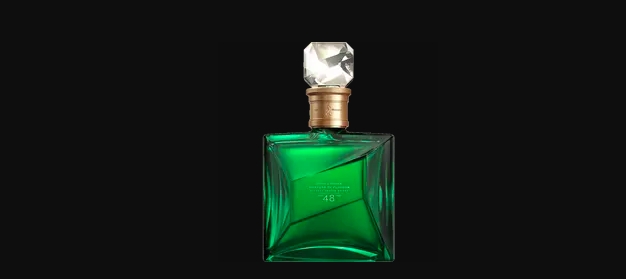
ABV: 41.5%
Average Price: $25,000
The Whiskies:
This whisky is so rare that the casks it’s made from are from ghost distilleries. Those are the ones that no longer operate. In this case, that’s barrels from Port Dundas, Brora, Glen Albyn, and Glenury Royal. Though, the Brora distillery has officially reopened as of spring 2021 after a nearly 40-year closure. Regardless, single malt barrels from each of those distilleries that were a minimum of 48 years old came together to make a mere 288 bottles for this release.
Tasting Notes:
The nose opens with a soft breeze on a misty pebble beach with a grill box smoking away somewhere in the distance with some oysters and salmon on the fire as dates wrapped in nori mingle with rum-soaked prunes, a hint of winter spice, and an old leather tobacco pouch that’s more old tobacco oil and old dirt than rawhide. The palate leans into the smoke but layers in dried cherries, blackberries, and slightly tart currants as the spice kicks in with sharp cinnamon with browned buttered layered into an apple fritter with a hint of vanilla and a touch of nuttiness. Hot fireplace coals, burnt toffee, and smoked berries round out the finish as a final note pulls in the beachside grill box smoke, berries, spice, and leather into a subtly soft end.
Bottom Line:
This is a hell of a pour. It’s Johnnie Walker taken into a different universe. If you’re at Johnnie Walker Princess Street in Edinburgh, you might get a chance at a pour (for the price of a car payment).
3. Glenlivet Gordon & MacPhail Generations 80 (Ongoing)

ABV: 44.9%
Average Price: $193,000
The Whiskies:
Gordon & MacPhail is renowned for finding miracle barrels of whisky and, thereby, releasing some of the oldest whiskies in the world. This release is from Cask no. 340 from Glenlivet. That cask dates back to the time of Queen Victoria in the mid-1800s. By the time it made it to Glenlivet in 1940, it had held most (grape pressings), sobretables (a simple fortified wine), and sherry in southern Spain near Jerez. The 132-gallon barrel was then filled with single malt distillate at Glenlivet while they were still malting their own barley on-site with their own peat and running their stills with a coal fire underneath them.
Given that the average barrel loses around two percent of its volume every year, it’s a miracle that this barrel even existed — much less produced enough juice for 250 decanters of whisky.
Tasting Notes (from the bottler):
“Appearance: Deep umber with magenta lights; old polished rosewood. Aroma: A complex, mellow nose feel, still vivacious after all these years. Top notes of almond oil, scented hand-soap, backed by sandalwood and gorse flowers on a warm day. A whiff of peat smoke in the empty glass. Palate: An oily texture, and lightly sweet to start (dates, salted plums, figs), drying elegantly (traces of dry Oloroso Sherry), towards a lengthy menthol finish. Drop of water increases spiciness.”
Bottom Line:
When I try this, I’ll make sure to pass along my tasting notes as a stand-alone right here on UPROXX. Until then, this is one of the rarest whiskies in known history. There’s literally only one whisky that’s rarer on the market.
2. The Macallan The Reach Aged 81 Years (February 2022)

ABV: 41.6%
Average Price: $200,000
The Whisky:
This single sherry barrel of whisky was found by Master Whisky Maker Kirsteen Campbell deep in The Macallan warehouses. The juice was filled into that barrel back in 1940, right before the distillery closed due to WWII. Campbell found the barrel and bottled it as-is at cask strength in 288 hand-blown glass decanters.
Tasting Notes (from the distiller):
“While the deep auburn liquid has a gentle smoothness, in keeping with The Macallan’s signature taste, the complexity of its profile offers an array of flavours. There is a rich, sweet smokiness, attributable to the peat used when malting the barley and firing the stills during this period in time. The smoky note is subtle but unmistakable, complemented with antique oak.”
Bottom Line:
This is an artistic centerpiece for your home that also happens to be a once-in-a-lifetime bottle of whisky. This is another whisky that I’m looking forward to tasting this year that I’ll let you know about when I do.
1. Dalmore Decades Collection No. 4 (September 2021)
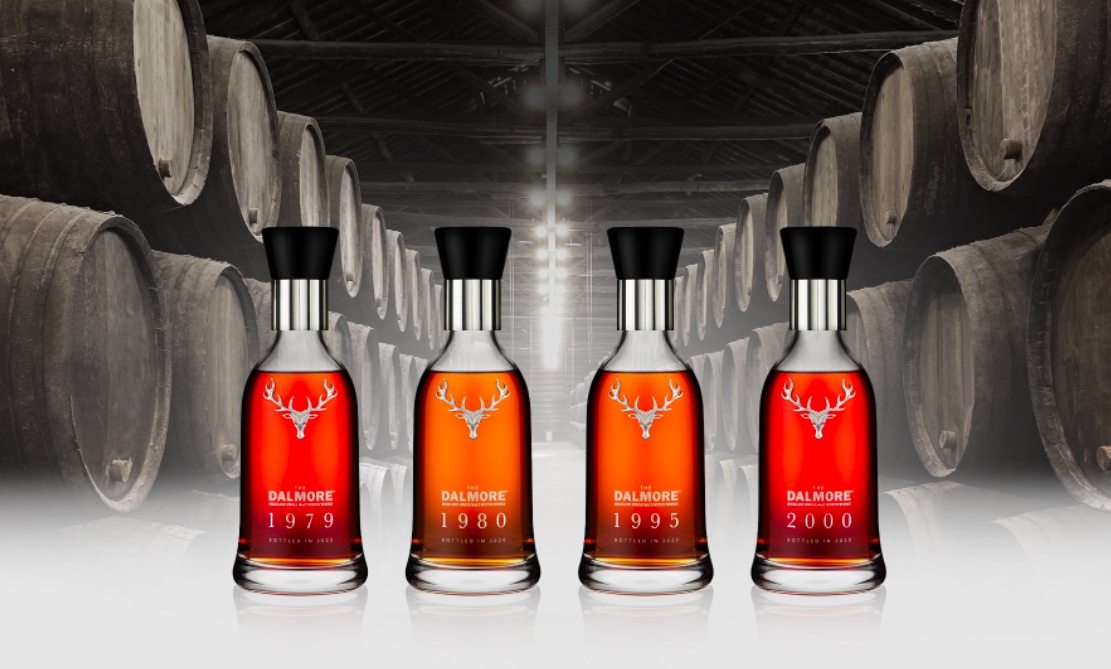
ABV: Varies
Average Price: $152,000
The Whiskies:
This is a bit of a cheat since this is a set of four rare bottles instead of just one. The collection is meant to represent the last four decades of The Dalmore with a whisky that’s pulled from each of those decades. The set includes a 40-year-old 1979 that was aged in Matusalem oloroso sherry wood and finished in a vintage port cask from 1952, another 40-year-old single malt — this time from 1980 — that was matured in ex-bourbon barrels and Matusalem sherry butts before a final maturation of five years in first-fill ex-bourbon barrels, a 25-year-old single malt from 1995 which was aged in ex-bourbon barrels and finished in Tintilla de Rota port pipes, and, finally, 20-year-old malt — from 2000 — aged in Matusalem oloroso sherry butts.
In total, 25 sets of four were released in the wild, making these exceedingly rare.
Tasting Notes:
Each of these has its own vibe entirely. So I’m going to short-hand what to expect from each (I’ll go more in-depth in a standalone article and an IG about the set down the road).
1979: Expect a lot of maple syrup-soaked oak with grilled — nearly burnt — pineapple, old and woody vanilla beans, date-rich sticky toffee pudding, and salted nuts.
1980: Expect that same nutty feel as above but with more dark cacao powder, marzipan smoothness, and bitter yet oily espresso beans.
1995: That nuttiness becomes the apparent throughline here as pecan pie with a buttery crust leads to a bramble full of ripe, tart, and sweet berries with bright orange citrus.
2000: Expect more fruit and honey on this one with apple pie filling, plenty of dark cherries covered in dark chocolate, and a hint of sassafras and anise.
Bottom Line:
Even though this isn’t the oldest whisky on the list, it’s the most comprehensive. You really get a sense of The Dalmore by drinking through this. It’s as historically important as it is delicious.







